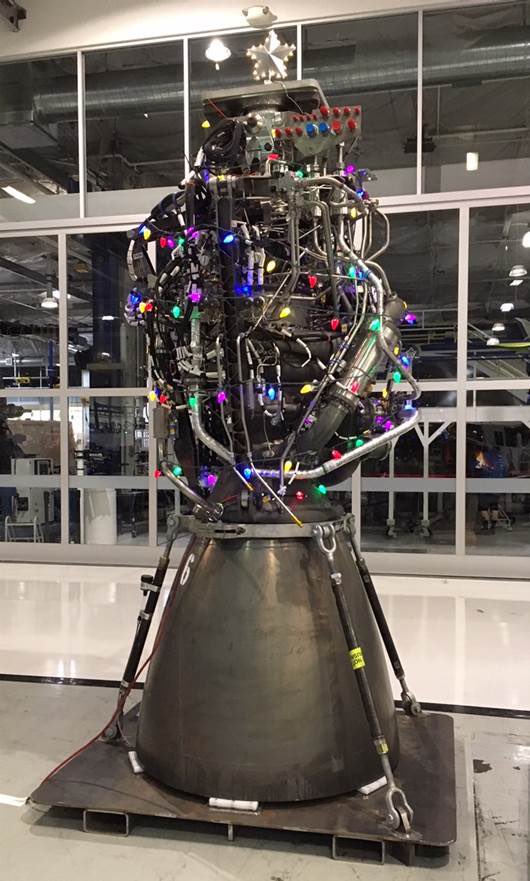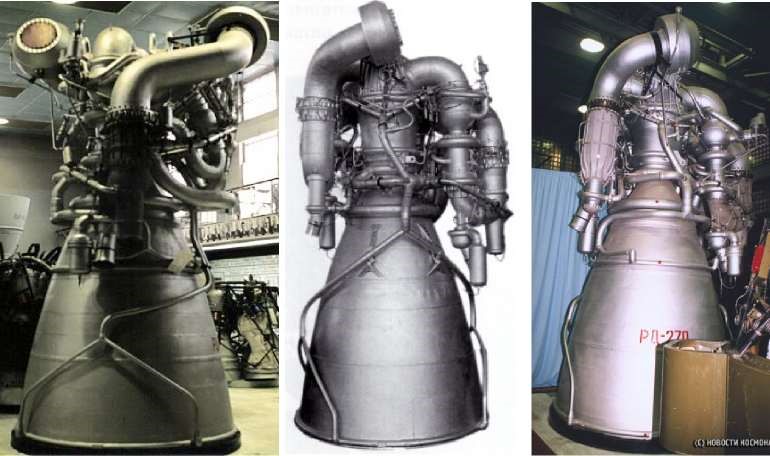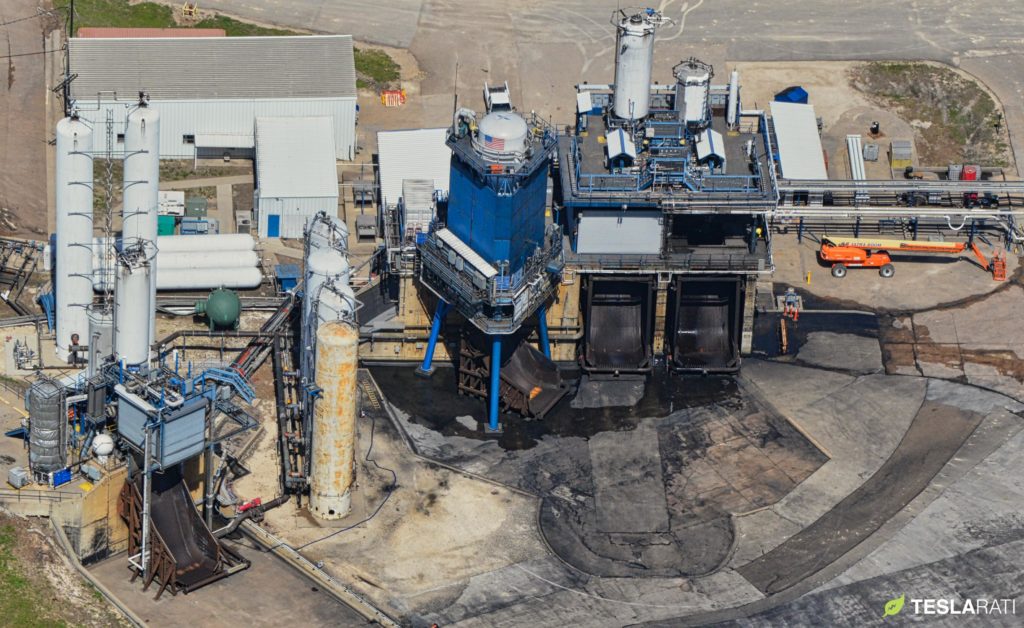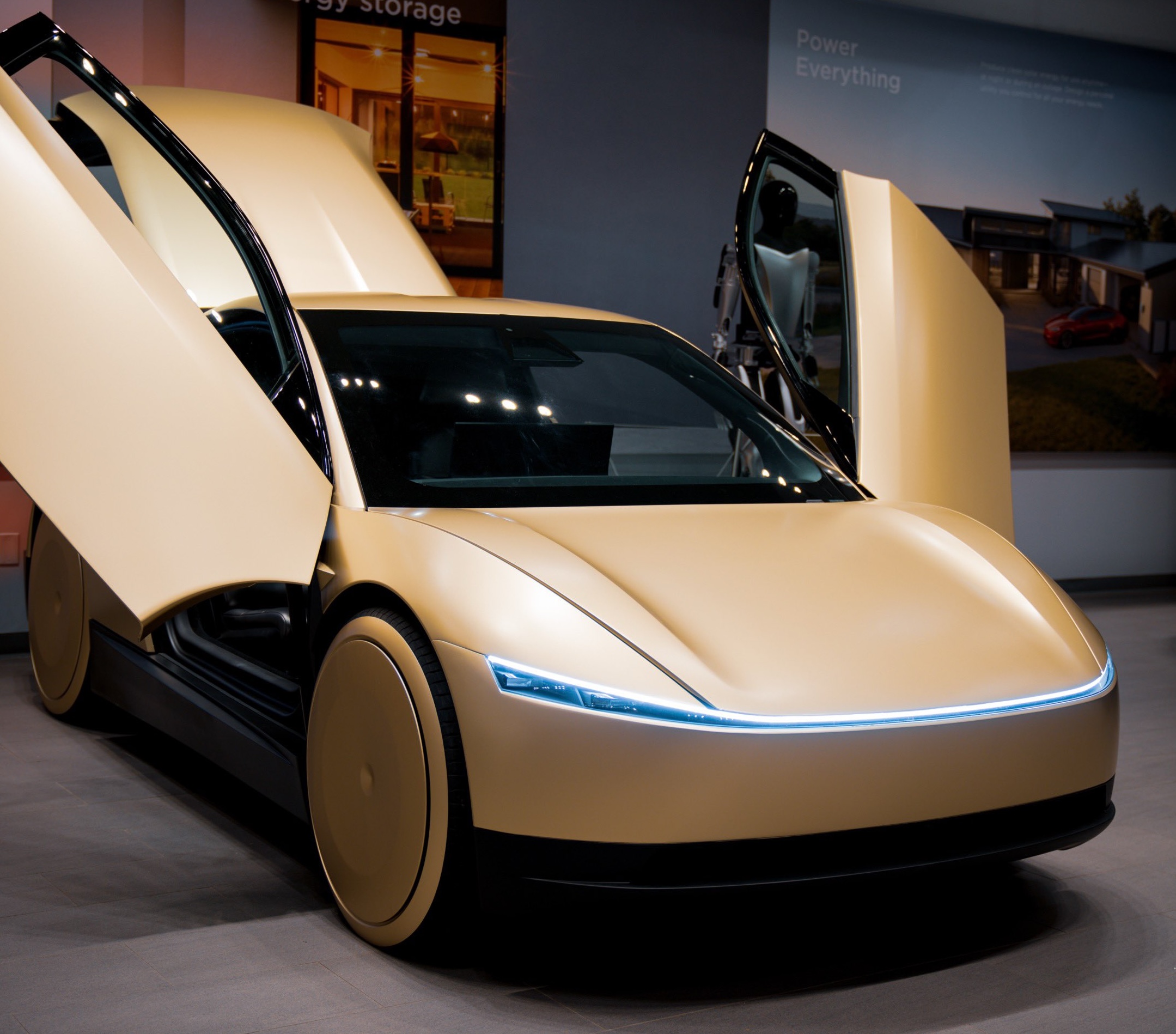

News
SpaceX's "Christmas tree" is a Raptor engine for the holidays
SpaceX CEO Elon Musk showed off a holiday-themed Raptor engine “Christmas tree” with its very own star on top. Musk noted via a tweet that the company’s Starship propulsion team is “making great progress” building, testing, and refining the Raptor engines that will one day propel the next-generation rocket to Earth orbit and beyond.
On December 13th, Musk revealed that SpaceX is preparing to ship the 17th completed Raptor engine to the company’s McGregor, Texas rocket test and development facilities, the site of several dedicated test stands for the Starship engine. Likely one of the most complex rocket engines ever designed, built, or tested, Raptor relies on an exotic combustion cycle, referring to the specifics of how engines turn their propellant into meaningful thrust.
Raptor uses what is known as full-flow staged combustion (FFSC) and is the first FFSC engine to graduate beyond ground testing and actually fly, thus far having completed two flight tests in July and August 2019 as part of SpaceX’s Starhopper test campaign. In simple terms, the FFSC cycle aims to extract as much energy from a rocket’s propellant as efficiently as possible, resulting in what is theoretically the most efficient possible chemical propulsion from a given fuel and oxidizer combination.
Due to the sheer complexity required to achieve full-flow staged combustion, the engine type is incredibly rare and only two other (once) functional examples exist – one developed by Soviet engineers in the 20th century and the other built, tested, and inexplicably scrapped by NASA in the 2000s. In fact, the Soviet RD-270 engine’s thrust-to-weight ratio is likely second only to SpaceX’s own Merlin 1D engine, an absolutely spectacular achievement for a propulsion bureau operating in the late 1960s.
RD-270 had major development challenges and would likely have taken years of additional hardware-rich (i.e. destructive trial and error) testing to produce an engine actually capable of reliable flight. Before the program was cancelled in 1970, 22 engines were tested and no single RD-270 survived to perform a fourth static fire, a testament to the immense challenge of FFSC engines.

SpaceX appears to have had a much better go of it with Raptor, although many, many engines have definitely been destroyed or irreparably damaged since the full-scale engine’s February 2019 static fire debut. SpaceX CEO Elon Musk says that the 17th completed Raptor engine is almost ready to head to McGregor, Texas to kick off development and acceptance testing.
It remains to be seen when exactly Raptor engines will be mature and reliable enough to perform the 3-10 minute burns needed to send a Starship to orbit, let alone the Moon or Mars, but Musk appears confident that SpaceX is making great progress along those lines.
Per photos and info posted by NASASpaceflight.com earlier today, Raptor engine SN15 is already installed on a recently-reactivated McGregor test stand ahead of its first rocket-related test in almost half a decade.
Formerly used to test Falcon 9 first stages before SpaceX built a new stand for Falcon 9 and Heavy, that tripod stand has been reactivated for the sole purpose of supporting vertical Raptor engine static fire testing, which Musk says will simplify and expedite development by making test conditions much more flight-like. As of now, all subscale and full-scale Raptor engine static fire testing has been performed at horizontal test stands in McGregor, apparently resulting in wear and behavior that would not likely appear if engines were tested vertically.
SpaceX has gone through the same process with its Merlin engine programs, beginning with horizontal testing (far easier and simpler) but ultimately building a number of dedicated vertical test bays to ensure that engine acceptance and development tests can be performed under more flight-like conditions.

According to NASASpaceflight, SpaceX may have already fired up Raptor SN15 on its reactivated tripod test stand earlier this week, kicking off Raptor’s first Starhopper-free vertical static fire testing. It’s now unclear where the twin horizontal Raptor test bays will fit into future engine testing given Musk’s comments. More importantly, every completed Starship and Super Heavy rocket will require several dozen new Raptor engines and every one of those engines will likely need to pass acceptance testing (including static fires) in McGregor before they can be installed on a launch vehicle.
SpaceX’s Falcon 9 rocket already requires 10 engines per new booster and upper stage, a test burden SpaceX has only managed with the help of two Merlin 1D stands and one Merlin Vacuum stand, all vertical. In other words, it’s safe to say that the reactivated tripod stand is likely just the first of several vertical Raptor test stands to come.

Check out Teslarati’s Marketplace! We offer Tesla accessories, including for the Tesla Cybertruck and Tesla Model 3.
Elon Musk
Tesla begins expanding Robotaxi access: here’s how you can ride
You can ride in a Tesla Robotaxi by heading to its website and filling out the interest form. The company is hand-picking some of those who have done this to gain access to the fleet.

Tesla has begun expanding Robotaxi access beyond the initial small group it offered rides to in late June, as it launched the driverless platform in Austin, Texas.
The small group of people enjoying the Robotaxi ride-hailing service is now growing, as several Austin-area residents are receiving invitations to test out the platform for themselves.
The first rides took place on June 22, and despite a very small number of very manageable and expected hiccups, Tesla Robotaxi was widely successful with its launch.
Tesla Robotaxi riders tout ‘smooth’ experience in first reviews of driverless service launch
However, Tesla is expanding the availability of the ride-hailing service to those living in Austin and its surrounding areas, hoping to gather more data and provide access to those who will utilize it on a daily basis.
Many of the people Tesla initially invited, including us, are not local to the Austin area.
There are a handful of people who are, but Tesla was evidently looking for more stable data collection, as many of those early invitees headed back to where they live.
The first handful of invitations in the second round of the Robotaxi platform’s Early Access Program are heading out to Austin locals:
I just got a @robotaxi invite! Super excited to go try the service out! pic.twitter.com/n9mN35KKFU
— Ethan McKanna (@ethanmckanna) July 1, 2025
Tesla likely saw an influx of data during the first week, as many traveled far and wide to say they were among the first to test the Robotaxi platform.
Now that the first week and a half of testing is over, Tesla is expanding invites to others. Many of those who have been chosen to gain access to the Robotaxi app and the ride-hailing service state that they simply filled out the interest form on the Robotaxi page of Tesla’s website.
That’s the easiest way you will also gain access, so be sure to fill out that form if you have any interest in riding in Robotaxi.
Tesla will continue to utilize data accumulated from these rides to enable more progress, and eventually, it will lead to even more people being able to hail rides from the driverless platform.
With more success, Tesla will start to phase out some of the Safety Monitors and Supervisors it is using to ensure things run smoothly. CEO Elon Musk said Tesla could start increasing the number of Robotaxis to monitors within the next couple of months.
Elon Musk
Tesla analyst issues stern warning to investors: forget Trump-Musk feud

A Tesla analyst today said that investors should not lose sight of what is truly important in the grand scheme of being a shareholder, and that any near-term drama between CEO Elon Musk and U.S. President Donald Trump should not outshine the progress made by the company.
Gene Munster of Deepwater Management said that Tesla’s progress in autonomy is a much larger influence and a significantly bigger part of the company’s story than any disagreement between political policies.
Munster appeared on CNBC‘s “Closing Bell” yesterday to reiterate this point:
“One thing that is critical for Tesla investors to remember is that what’s going on with the business, with autonomy, the progress that they’re making, albeit early, is much bigger than any feud that is going to happen week-to-week between the President and Elon. So, I understand the reaction, but ultimately, I think that cooler heads will prevail. If they don’t, autonomy is still coming, one way or the other.”
BREAKING: GENE MUNSTER SAYS — $TSLA AUTONOMY IS “MUCH BIGGER” THAN ANY FEUD 👀
He says robotaxis are coming regardless ! pic.twitter.com/ytpPcwUTFy
— TheSonOfWalkley (@TheSonOfWalkley) July 2, 2025
This is a point that other analysts like Dan Ives of Wedbush and Cathie Wood of ARK Invest also made yesterday.
On two occasions over the past month, Musk and President Trump have gotten involved in a very public disagreement over the “Big Beautiful Bill,” which officially passed through the Senate yesterday and is making its way to the House of Representatives.
Musk is upset with the spending in the bill, while President Trump continues to reiterate that the Tesla CEO is only frustrated with the removal of an “EV mandate,” which does not exist federally, nor is it something Musk has expressed any frustration with.
In fact, Musk has pushed back against keeping federal subsidies for EVs, as long as gas and oil subsidies are also removed.
Nevertheless, Ives and Wood both said yesterday that they believe the political hardship between Musk and President Trump will pass because both realize the world is a better place with them on the same team.
Munster’s perspective is that, even though Musk’s feud with President Trump could apply near-term pressure to the stock, the company’s progress in autonomy is an indication that, in the long term, Tesla is set up to succeed.
Tesla launched its Robotaxi platform in Austin on June 22 and is expanding access to more members of the public. Austin residents are now reporting that they have been invited to join the program.
Elon Musk
Tesla surges following better-than-expected delivery report
Tesla saw some positive momentum during trading hours as it reported its deliveries for Q2.

Tesla (NASDAQ: TSLA) surged over four percent on Wednesday morning after the company reported better-than-expected deliveries. It was nearly right on consensus estimations, as Wall Street predicted the company would deliver 385,000 cars in Q2.
Tesla reported that it delivered 384,122 vehicles in Q2. Many, including those inside the Tesla community, were anticipating deliveries in the 340,000 to 360,000 range, while Wall Street seemed to get it just right.
Tesla delivers 384,000 vehicles in Q2 2025, deploys 9.6 GWh in energy storage
Despite Tesla meeting consensus estimations, there were real concerns about what the company would report for Q2.
There were reportedly brief pauses in production at Gigafactory Texas during the quarter and the ramp of the new Model Y configuration across the globe were expected to provide headwinds for the EV maker during the quarter.
At noon on the East Coast, Tesla shares were up about 4.5 percent.
It is expected that Tesla will likely equal the number of deliveries it completed in both of the past two years.
It has hovered at the 1.8 million mark since 2023, and it seems it is right on pace to match that once again. Early last year, Tesla said that annual growth would be “notably lower” than expected due to its development of a new vehicle platform, which will enable more affordable models to be offered to the public.
These cars are expected to be unveiled at some point this year, as Tesla said they were “on track” to be produced in the first half of the year. Tesla has yet to unveil these vehicle designs to the public.
Dan Ives of Wedbush said in a note to investors this morning that the company’s rebound in China in June reflects good things to come, especially given the Model Y and its ramp across the world.
He also said that Musk’s commitment to the company and return from politics played a major role in the company’s performance in Q2:
“If Musk continues to lead and remain in the driver’s seat, we believe Tesla is on a path to an accelerated growth path over the coming years with deliveries expected to ramp in the back-half of 2025 following the Model Y refresh cycle.”
Ives maintained his $500 price target and the ‘Outperform’ rating he held on the stock:
“Tesla’s future is in many ways the brightest it’s ever been in our view given autonomous, FSD, robotics, and many other technology innovations now on the horizon with 90% of the valuation being driven by autonomous and robotics over the coming years but Musk needs to focus on driving Tesla and not putting his political views first. We maintain our OUTPERFORM and $500 PT.”
Moving forward, investors will look to see some gradual growth over the next few quarters. At worst, Tesla should look to match 2023 and 2024 full-year delivery figures, which could be beaten if the automaker can offer those affordable models by the end of the year.
-

 Elon Musk2 days ago
Elon Musk2 days agoTesla investors will be shocked by Jim Cramer’s latest assessment
-

 News1 week ago
News1 week agoTesla Robotaxi’s biggest challenge seems to be this one thing
-

 Elon Musk2 weeks ago
Elon Musk2 weeks agoElon Musk slams Bloomberg’s shocking xAI cash burn claims
-

 News2 weeks ago
News2 weeks agoTexas lawmakers urge Tesla to delay Austin robotaxi launch to September
-

 Elon Musk1 week ago
Elon Musk1 week agoFirst Look at Tesla’s Robotaxi App: features, design, and more
-

 Elon Musk2 weeks ago
Elon Musk2 weeks agoTesla Robotaxis are becoming a common sight on Austin’s public roads
-

 Elon Musk2 weeks ago
Elon Musk2 weeks agoxAI’s Grok 3 partners with Oracle Cloud for corporate AI innovation
-

 Elon Musk2 weeks ago
Elon Musk2 weeks agoSpaceX President meets India Minister after Starlink approval














